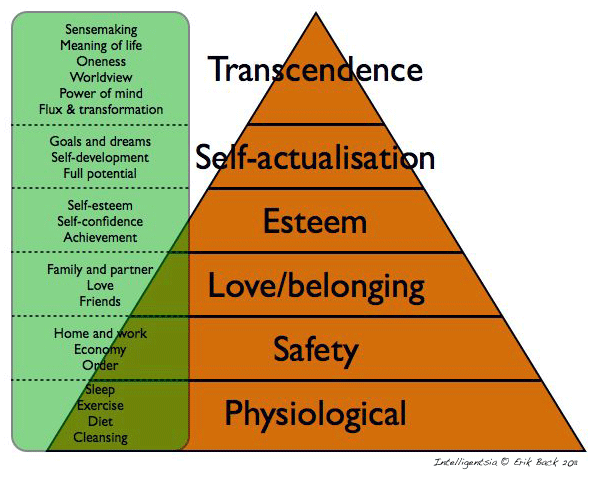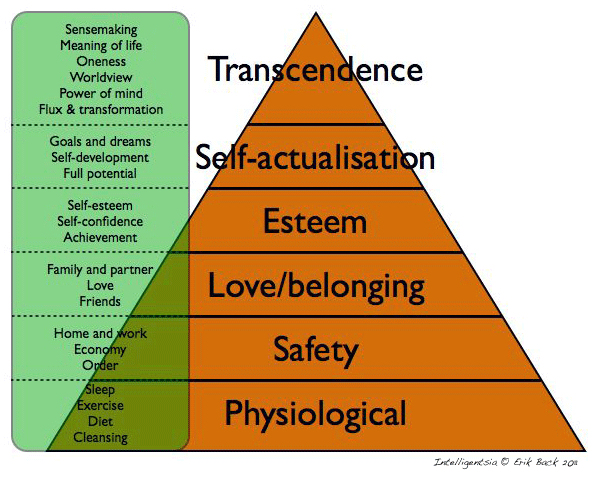
We all were taught that self actualization is the pinnacle of motivation right? Wrong! Turns out Moslow switched it up a notch and transcended from from what seemed to be a ‘self’ need (selfish, well as it should be #KanyeTypaSelfLove right?), so he transcended from the self to a higher pinnacle need that only a few get to attain.
In 1943 Abraham Maslow published his groundbreaking model for deciphering human motivation. Ever since then, Maslow’s Hierarchy has been the primary model for understanding why people do what they do. The general idea is that we, ourselves, become capable of doing whatever we choose without any internal resistance when we operate to fulfill this level of our needs. This idea is woven into the fabric of business, psychology, organizational behavior and even theme parks. We touch it every day in some way.
Here’s the crazy thing: it’s outdated. Maslow’s theorizing didn’t stop. He changed and evolved his view in subsequent years. A LOT. In fact the final version of his model was completely different. In 1970 — on his deathbed — he published a revision that outlined a fundamental change to the way that he saw motivation and its potential impact on who we are. In the 1970 revision Maslow put a notion called transcendence at the top. Not self-actualization.
What is the difference? What does it mean? Maslow’s 1943 version put the concept of individual development as the pinnacle of all motivations, the most evolved and highest-order need. The 1970 version moves beyond that and asserts that, once personal mastery is attained, the next need, and subsequently higher motivation, is to help others. We do that by moving beyond all of the forces that separate us from one-another. Specifically, we transcend — or move beyond — our race, our culture, our opinions and even our notion of ourselves to help each other. Transcendence is also expressed as connectedness. It’s about seeing ourselves not as being whole just to ourselves, but being beyond that, transforming ourselves to a more collaborative/connected notion of who we are and what our purpose is. This is a game changer for me. People who are operating on this level, by Abe’s view, were the most highly evolved; #GeniusLevel .
So for the last forty-four years and counting we’ve been referencing an obsolete model. I have no idea why this isn’t taught… And it’s amazing to think through what the impact on the world today would be if this notion of transcendence were presented as the dominant model, not self-actualization.
It’s not surprising this concept would emerge from within the psychology and philosophies of the 1970’s and the time of LSD and free love. But I don’t think it can be dismissed that easily. Through the academic/hippie views in his explanation of transcendence, there seems to be some real truth. There are parallels in Eastern philosophies, in teachings of almost every religion, psychological approach, and self-help group.
This new bit of information had a huge impact on me. It enabled me to see my own goals differently and has given me a framework for removing myself from the center of my aspirations.
Does it change anything for you? Think of people that have ‘self-actualized’ and look at how they also have transcended from the self to a higher form that being playing giver, playing mentor, have an inner higher need to help and assist other and change the world!! For example here are just a few individuals who have transcended and now at the pinnacle of the the hierarchy, hashtag philanthropists doing the most:
– Oprah Winfrey
– Warren Buffet
– Bill Gates
– Will smith
– Michael Jackson
– Bono
– George Cloony
– Walt Disney
– Kanye West
#GENIUSLEVEL
